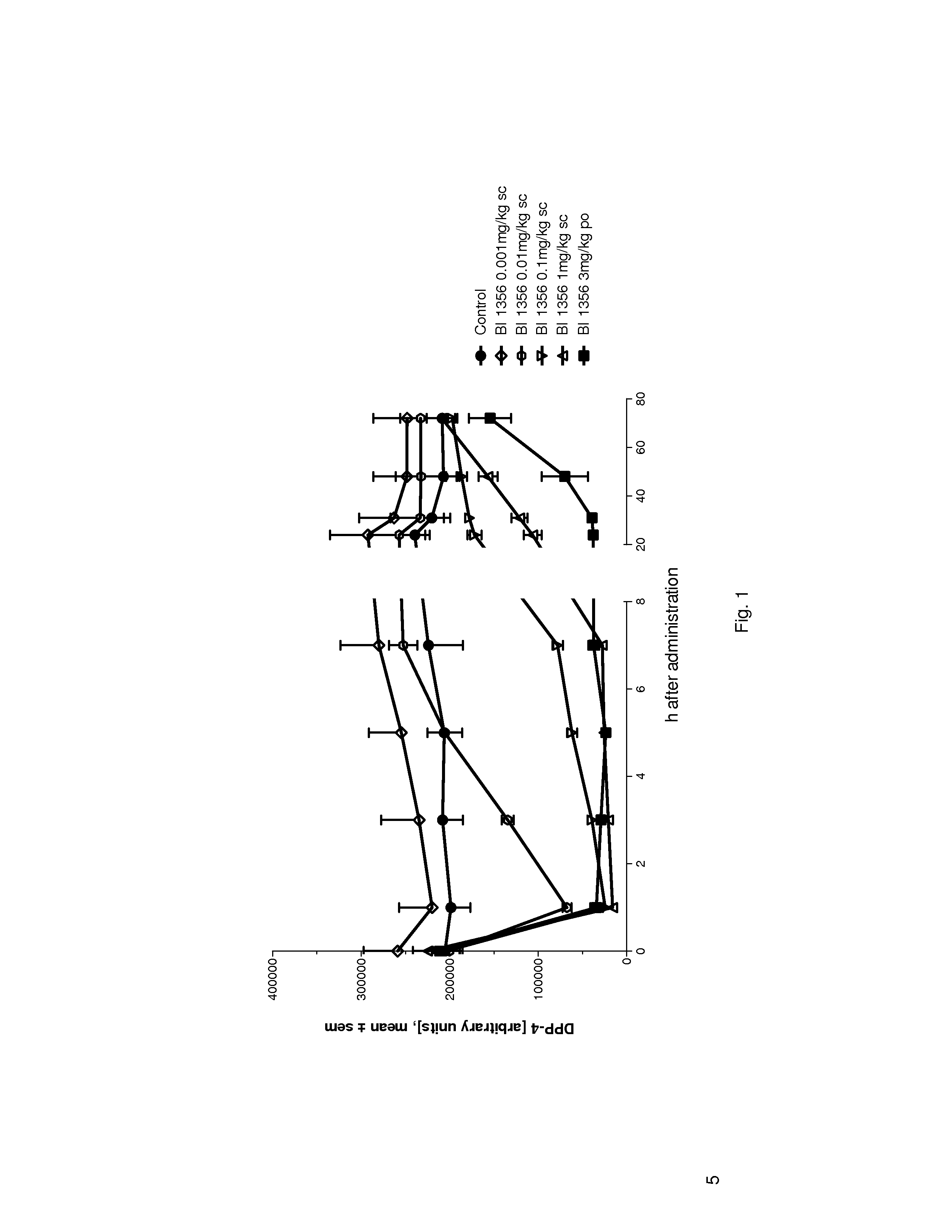Subcutaneous therapeutic use of dpp-4 inhibitor
a dpp4 inhibitor and subcutaneous therapy technology, applied in the direction of metabolism disorder, extracellular fluid disorder, peptide/protein ingredient, etc., can solve the problems of two to five fold increase in cardiovascular disease risk, significant reduction of life expectancy, and particularly complex therapeutic challenges, so as to prevent obesity or overweight, and reduce body weight
- Summary
- Abstract
- Description
- Claims
- Application Information
AI Technical Summary
Benefits of technology
Problems solved by technology
Method used
Image
Examples
examples
Linagliptin s.c. Dosing and its DPP-4 Inhibition in Plasma
[0242]Linagliptin subcutaneous (s.c.) dosing and DPP-4 inhibition in plasma can be comparable in efficacy and duration of action to oral dosing, which may make it suitable for use in fixed combination e.g. with a GLP-1 (GLP-1 mimetic or native GLP-1) having a short half life:
[0243]Male ZDF rats (n=5) have been treated with different concentrations of BI 1356 in a subcutaneous (s.c.) administration regimen (0.001 mg / kg, 0.01 mg / kg, 0.1 mg / kg and 1 mg / kg in 0.5 ml / kg NaCl solution) in comparison to 3 mg / kg p.o. (in 0.5% Natrosol, 5 ml / kg volume of application).
[0244]DPP-4 activity in EDTA plasma was detected 1, 3, 5, 7, 24, 31, 48, 72 h following drug administration (blood was taken by venous puncture under isofluran anesthesia from the vena sublingualis).
[0245]Doses of BI 1356 from 0.01 mg / kg (s.c. administered) on demonstrated significant inhibition of DPP-4 activity compared to control. The dose of 0.1 mg / kg and 1 mg / kg (s.c...
PUM
| Property | Measurement | Unit |
|---|---|---|
| Mass | aaaaa | aaaaa |
| Mass | aaaaa | aaaaa |
| Mass flow rate | aaaaa | aaaaa |
Abstract
Description
Claims
Application Information
 Login to View More
Login to View More - R&D
- Intellectual Property
- Life Sciences
- Materials
- Tech Scout
- Unparalleled Data Quality
- Higher Quality Content
- 60% Fewer Hallucinations
Browse by: Latest US Patents, China's latest patents, Technical Efficacy Thesaurus, Application Domain, Technology Topic, Popular Technical Reports.
© 2025 PatSnap. All rights reserved.Legal|Privacy policy|Modern Slavery Act Transparency Statement|Sitemap|About US| Contact US: help@patsnap.com



